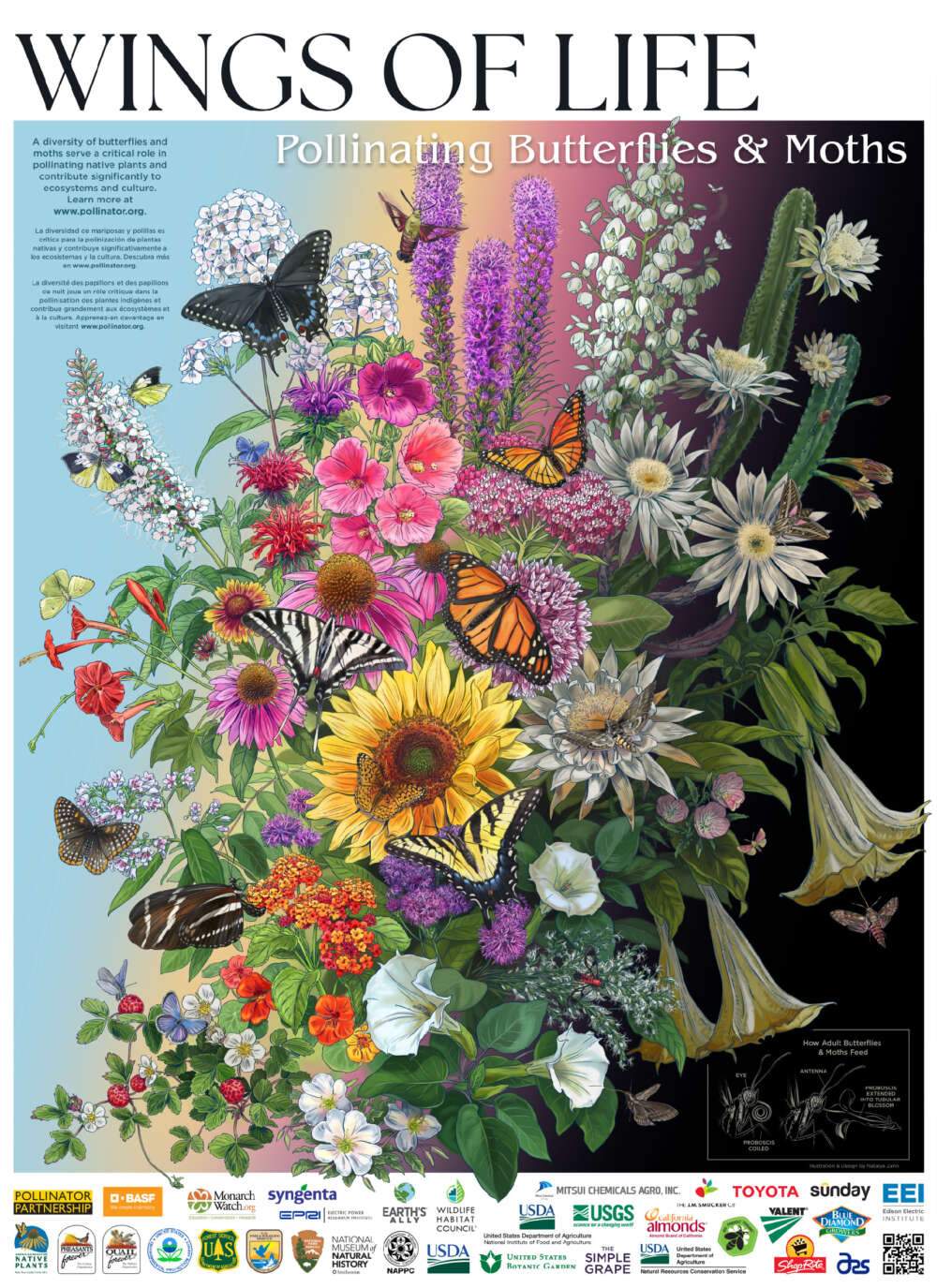Pollinator Week | June 17 - June 21
Pollinator Week is an annual celebration in support of pollinator health that was initiated and is managed by Pollinator Partnership. It is a time to raise awareness for pollinators and spread the word about what we can do to protect them. The great thing about Pollinator Week is that you can celebrate and get involved any way you like! However you choose to celebrate this year, be sure to share your story with us by tagging us on social media using the hashtag #PollinatorWeek.
Pollinator Week was initiated and is managed by Pollinator Partnership, and fourteen years ago the U.S. Senate’s unanimous approval and designation of a week in June as “National Pollinator Week” marked a necessary step toward addressing the urgent issue of declining pollinator populations. Pollinator Week has now grown into an international celebration, promoting the valuable ecosystem services provided by bees, birds, butterflies, bats, beetles, moths, wasps, and flies. People across the planet have pledged to continue promoting pollinator health and well-being through their Pollinator Week events.
Pollinator Week was initiated and is managed by Pollinator Partnership, and fourteen years ago the U.S. Senate’s unanimous approval and designation of a week in June as “National Pollinator Week” marked a necessary step toward addressing the urgent issue of declining pollinator populations. Pollinator Week has now grown into an international celebration, promoting the valuable ecosystem services provided by bees, birds, butterflies, bats, beetles, moths, wasps, and flies. People across the planet have pledged to continue promoting pollinator health and well-being through their Pollinator Week events.
|
Pollinators need you. You need pollinators.
Birds, bats, bees, butterflies, beetles, and other small mammals that pollinate plants are responsible for bringing us one out of every three bites of food. They also sustain our ecosystems and produce our natural resources by helping plants reproduce. Pollinating animals travel from plant to plant carrying pollen on their bodies in a vital interaction that allows the transfer of genetic material critical to the reproductive system of most flowering plants – the very plants that
Pollinators are essential to our daily life. Imagine a cup without coffee, a garden without flowers, or a plate without food. With the decline of pollinators on the rise, our food is on the line. More than 200,000 species of pollinators are critical to the growth of our food supply. Without them, we would go hungry. If you love food, flowers, and pollinators, please make a donation to Pollinator Partnership. Our mission to is protect pollinators and ensure our future food security through conservation, research, and education. |
Bigger than Bees
So much of our agricultural productivity is dependent on the European honeybee (Apis mellifera) that it is no wonder that our attention is drawn to their plight. When the honeybee suffers, so does agriculture, and so, potentially do all who depend on the bounty that comes from animal pollinated angiosperms, the flowering plants from which we derive many of our most delicious and health-giving fruits and vegetables.
While honeybees are clearly not the only hard-working pollinators that deliver a bounty to humans and other animals, their recent deaths from Colony Collapse Disorder (CCD) starting in 2006 have captured the world’s attention. To date, CCD has been defined as a series of symptoms, but the cause and the cure have remained complex and elusive. CCD is not the only problem facing honeybees; in fact, in 2010 the overwintering losses were at the same unsustainable rates of over 30% but the cause seemed to be less from CCD than from other problems. Below is a list of the variety of issues facing honeybees.
Plant for Pollinators
Whether you are a farmer of many acres, land manager of a large tract of land, or a gardener with a small lot, you can increase the number of pollinators in your area by making conscience choices to include plants that provide essential habitat for bees, butterflies, moths, beetles, hummingbirds, and other pollinators. Invite pollinators to your neighborhood by planting a pollinator friendly habitat in your garden, farm, school. park or just about anywhere!
Plants can be grouped together based on the similar characteristics of their flowers.
These floral characteristics can be useful to predict the type of pollination method or animal that is most effective for that group of plants. This association between floral characteristics and pollination method is called a pollination syndrome.
The interactions of animal pollinators and plants have influenced the evolution of both groups of organisms. A mutualistic relationship between the pollinator and the plant species helps the pollinator find necessary pollen and nectar sources and helps the plant reproduce by ensuring that pollen is carried from one flower to another.
Plants can be grouped together based on the similar characteristics of their flowers.
These floral characteristics can be useful to predict the type of pollination method or animal that is most effective for that group of plants. This association between floral characteristics and pollination method is called a pollination syndrome.
The interactions of animal pollinators and plants have influenced the evolution of both groups of organisms. A mutualistic relationship between the pollinator and the plant species helps the pollinator find necessary pollen and nectar sources and helps the plant reproduce by ensuring that pollen is carried from one flower to another.
Not all pollinators are found in each North American ecoregion, and some are more important in different parts of the United States. Use the guide below to understand the plants and pollinators where you live.
|
Bradford County Conservation District
Stoll Natural Resource Center 200 Lake Road, Suite E | Towanda PA 18848 Phone: (570)-485-3144 |

